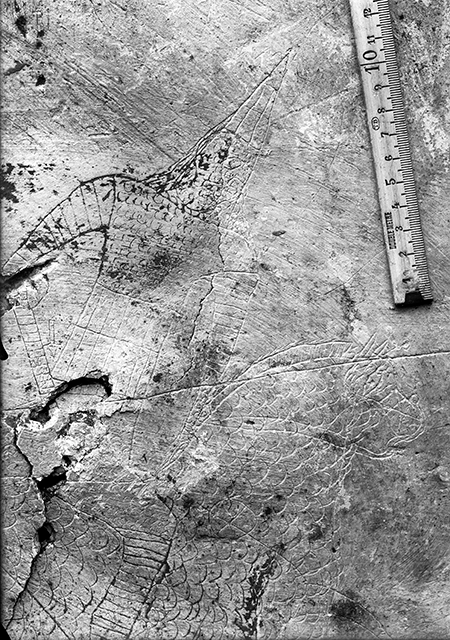Detail of graffito of mounted lancer (clibanarius), wall of assembly hall
YUAG, Dura-Europos Collection, negative number dura-d193~01

This graffito of a lancer (clibanarius) on horseback depicts a soldier belonging to a particular unit of heavy cavalry. He is wearing a knee-length mail vest, a plate (lamellar) corselet, ring armor on his arms and lower legs, and a tall conical helmet with neck guard and ribbon. The horse also wears a suit of armor, called a scale trapper: Dura is the only place where horse armor used by the heavy cavalry of the Arsacid (Parthian), Sasanian, and later Roman Empires has been discovered. Drawn on a wall in the assembly hall of the Christian building, the graffito dates to approximately 232, and although it is not entirely certain if it was visible during the building’s last phase, members of the military at Dura may have been among the congregants (an inscription records a dedication made by Proclus, whose name also appears in an inscription inside the garrison). The lancer may represent an Arsacid (Parthian) or Sasanian soldier, or a Palmyrene or another Syro-Mesopotamian fighting in a unit of the Roman army, or even perhaps a cavalryman from another Roman legion drawn from recruits from a different region.